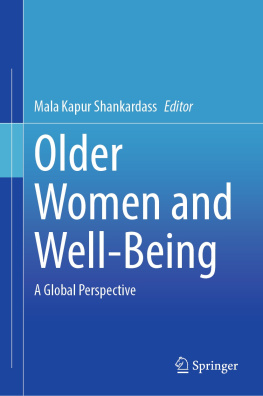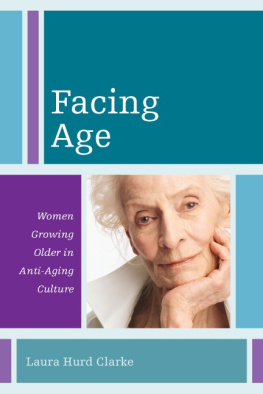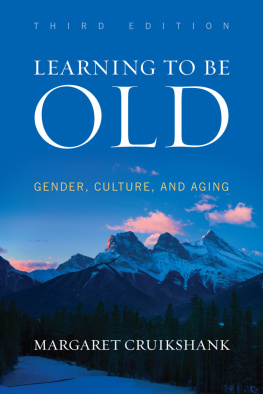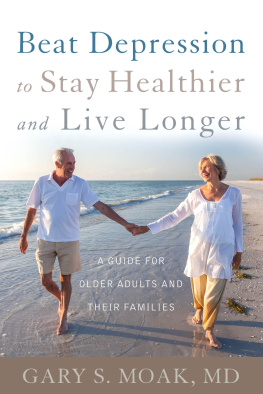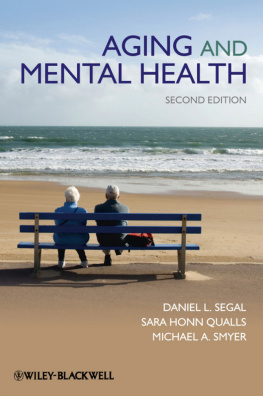
When Older Women Speak
Studying the interaction of gender, class, race/ethnicity, and aging in the depression experience of older women provides a unique opportunity to understand how aging plays a significant role in shaping conceptions of self and emotional health trajectories for women. Based on author interviews with mostly working-class, depressed, elderly women, this book contributes to the theoretical understanding of femininity and aging and the practical implications for policy and effective health care treatment. Cultivating an alternative self can reduce older womens suffering and provide the emotional resources to change their inner worlds, even if the outer world stretches beyond their control.
Depression affects women twice as often as men. Up to 40 percent of older adults respond poorly to depression treatment, and depression is linked to higher morbidity and mortality rates and cognitive decline. Older adults with depression have 50 percent higher health care costs, yet depression is accurately recognized in less than one half of older adults in primary care. While older men are more likely to die by suicide, older women are two to three times more likely to attempt suicide, and depression is the best predictor of suicide in older adults. Latina and African American women have lower rates of depression treatment compared to non-minority women. From issues of health care access to the stigma of depression, older Latinas and African American women are at an increased risk for untreated depression. This book seeks to address some of the significant gaps in our knowledge of late-life depression in women, especially in ethnic minorities, ranging from detection and efficacy of depression treatment to informal influences (e.g., family) on formal depression care seeking.
Ester Carolina Apesoa-Varano is an associate professor at the Betty Irene Moore School of Nursing at the University of California-Davis.
Charles S. Varano is a professor at the Department of Sociology at California State University-Sacramento.
When Older Women Speak
Aging, Emotional Distress, and the Self
Ester Carolina Apesoa-Varano and Charles S. Varano
First published 2020
by Routledge
52 Vanderbilt Avenue, New York, NY 10017
and by Routledge
2 Park Square, Milton Park, Abingdon, Oxon, OX14 4RN
Routledge is an imprint of the Taylor & Francis Group, an informa business
2020 Taylor & Francis
The right of Ester Carolina Apesoa-Varano and Charles S. Varano to be identified as authors of this work has been asserted by them in accordance with sections 77 and 78 of the Copyright, Designs and Patents Act 1988.
All rights reserved. No part of this book may be reprinted or reproduced or utilised in any form or by any electronic, mechanical, or other means, now known or hereafter invented, including photocopying and recording, or in any information storage or retrieval system, without permission in writing from the publishers.
Trademark notice: Product or corporate names may be trademarks or registered trademarks, and are used only for identification and explanation without intent to infringe.
Library of Congress Cataloging-in-Publication Data
A catalog record for this title has been requested
ISBN: 978-0-367-44201-9 (hbk)
ISBN: 978-0-367-44202-6 (pbk)
ISBN: 978-1-003-00828-6 (ebk)
Typeset in Bembo
by Lumina Datamatics Limited
For our mothers, Nidia Saavedra de Apesoa and Christine Ann Varano, and our grandmothers, Nydia Camussi de Saavedra and Rebeca Segura Jabif de Apesoa. In memory of Mary Provenzano and Rose Santos.
Contents
Few, if any, research projects such as presented in this book are solitary endeavors. The collective engagement of various people at various stages of the work makes possible what is read in these pages. This study of older women, emotional distress, and the self was a research project that Ester Apesoa-Varano conducted as a founding assistant professor at the newly established Betty Irene Moore School of Nursing at the University of California, Davis. Her post-doctoral training and participation in National Institute of Mental Health research on older men and depression (Mens Health and Aging Study, 20082011, Ladson Hinton, Principle Investigator (P.I).) led her to inquire about the experiences of a diverse group of older women suffering from emotional distress such as depression. Charles Varano began contributing to the project early on, initially as a supportive husband and intellectual sounding board, then later as a co-analyst of the interview data, and finally as a co-author of the book you will read. Simply put, we could not have completed this project without one another.
Many individuals and institutions supported this research throughout the years. We are grateful for funding Ester received from the Building Interdisciplinary Research Careers in Womens Health, a program sponsored by the Office of Research on Womens Health at the National Institutes of Health and the Betty Irene Moore School of Nursing. Charles was also awarded a much needed semester sabbatical from California State University, Sacramento that allowed him to further analyze interview data and complete initial chapter drafts. We extend a special thanks to the regional clinics that allowed us, based on our Institutional Review Board protocol, to recruit participants for this project and on occasion provided us office space to conduct interviews.
A number of people helped bring this study to fruition, especially Vanessa Santillan, Yarin Gomez, Sydney Lopez, and Gisela Escalera who worked as research assistants during different phases of the project and provided support in the field and in the office. Many thanks to Anita Kando, whom Ester has relied upon for over 15 years for professional transcription of interview data. Judith C. Barker has had a lasting influence on our work given her deep understanding of social gerontology and the perspective she brought to the nexus of the medical and social sciences. As with previous research we have published, Dean Dorn again offered important insights and constructive critique after closely reading the entire manuscript. Likewise, Vicki Smith, who has supported Esters scholarship, first as her doctoral mentor up through her present faculty position, also read the entire manuscript and provided extensive comments and suggestions that led us to revise different parts of the manuscript for clarity and coherence.
Ester is also grateful to Sheryl Catz for her unwavering friendship and willingness to entertain ideas across disciplinary fields in an engaging and supportive manner. Jann Murray-Garcias support, respect, and admiration for the work of writing books have been refreshing and much appreciated over the years. We have also both received encouragement and insights from many retired and active colleagues during the analysis and writing of this book, including Bohsiu Wu, Jackie Carrigan, Jud Landis, Samantha Blackburn, Holly Thurston, Claire Valderama-Wallace, Ian Wallace, Stuart Henderson, and Daphene Francis. Dean Birkenkamp, senior editor at Routledge, has consistently supported us as this project evolved, while assistant editors Tyler Bay and then Lewis Hodder have helped us move this work to final publication. Extensive comments and suggestions by early reviewers were invaluable contributions to our analysis and conceptual framing of the interviews. And Jeanne Baird brought much appreciated clarity to passages of strained or muddled prose.


